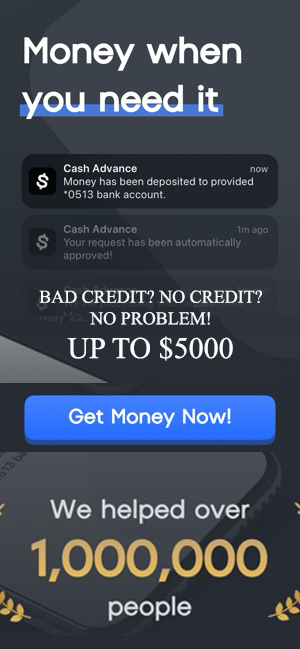MoMo Productions/Getty Images
Key takeaways
- Many financial institutions — including online lenders, banks and credit unions — offer personal loan amounts of $15,000.
- Before taking out a $15k personal loan, review your budget to see if you can afford the monthly payments.
- You should also consider alternative financial solutions that might be cheaper, like home equity loans or home equity lines of credit (HELOCs).
If you need $15,000 to cover a big-ticket purchase, home improvement project, financial emergency or debt consolidation, you may want to consider a personal loan. Many lenders offer competitive rates, rapid decisions and quick funding.
Before applying, run the numbers to decide if you need a $15k loan — or if a smaller amount could work. Use a personal loan calculator to understand the costs of a $15,000 loan over the three to five years most loan terms last. You should also familiarize yourself with the requirements and common fees to avoid any surprises during the application review process.
Best $15,000 personal loans
Personal loans for $15,000 are available through banks, credit unions and online lenders. Most will have a wide range of loan amounts that should cover a $15,000 expense. When shopping for a loan, compare personal loan rates and terms to better assess which lenders offer the best fit for your needs.
| APR range | Loan amount range | Minimum credit score requirement | |
| LightStream | 6.49%-25.29%* with AutoPay | $5,000–$100,000 | 695 |
| PNC Bank | 7.89%-24.74% | $1,000–$35,000 | Not Specified |
| SoFi | 8.99%-35.49%* with Autopay | $5,000–$100,000 | |
| Happy Money | 8.95%-29.99% | $5,000–$40,000 | 640 |
Bankrate’s view
LightStream offers some of the lowest rates in the industry. It is most suitable for borrowers with good or excellent credit who want flexible loan terms of up to 20 years. It offers same-day funding on loans approved before 2:30 p.m. ET on weekdays, or you can choose to receive the loan proceeds at a later date that is more convenient for you.
Pros
- Same-day funding available
- No fees
- Wide range of repayment terms
Cons
- No option to prequalify
- Good credit required
- Must have a long credit history
Bankrate’s view
If you’re looking for a lender that offers in-person service, PNC Bank could be an ideal option. There are over 2,200 brick-and-mortar locations in 26 states and Washington, D.C. Rate discounts are also available on personal loans for current PNC customers who enroll in autopay. Even if you’re new to PNC, you could still qualify for a loan with a competitive interest rate if you have a solid credit history. However, borrowers outside its service area won’t be able to qualify.
Pros
- Competitive starting APR
- Autopay discount with PNC checking account
- In-person service
Cons
- Loan approval takes a few days
- New customers may need to sign loan documents in person
- Not available in all states
Bankrate’s view
SoFi is an online lender that offers resources and financial education coaches to help borrowers responsibly manage loan payments. You may be eligible to borrow up to $100,000 — in addition to a variety of other banking services offered by SoFi. It also offers autopay discounts along with member rewards. And best of all, SoFi has optional origination fees and no prepayment penalties, allowing you to tailor your payments to your needs.
Pros
- Optional fees
- Autopay discount
- Option to prequalify
Cons
- Good credit required
- No cosigners
- High minimum loan amount
Bankrate’s view
Happy Money features personal loans with competitive interest rates, even if you don’t have perfect credit. Beyond offering flexible personal loan solutions, Happy Money also advertises a focus on financial wellness. It offers a suite of financial assessments to borrowers to facilitate the path to responsible debt management and better financial health.
Pros
- Low maximum APR
- Option to send funds directly to creditors
- Prequalification available
Cons
- Origination fee of up to 10 percent
- Not available in Iowa, Massachusetts or Nevada
- Joint applications not available
How to get a $15,000 personal loan
The steps for getting a personal loan are fairly straightforward:
- Start with a personal loan calculator: Run the numbers to see what you would be paying each month for a $15,000 loan at different interest rates. Compare that to your monthly budget, and make sure you have room to add the additional monthly payment.
- Compare lenders: Review the rates, terms, fees and eligibility requirements for multiple lenders. Try to prequalify (which doesn’t impact your credit score) and get quotes from at least three. Banks, credit unions and online lenders all have their unique pros and cons.
- Apply to the best choice: Once you know which lender offers the most favorable terms, apply for the loan formally. Required documentation likely includes a photo ID, proof of residency, your employer’s contact information, pay stubs or tax returns. At this point, the lender may run a hard credit check, which may reduce your credit score by up to 10 points temporarily.
- Begin making payments: Some lenders can get you the funds in as little as the same day or the next business day. If you consolidate, the lender may pay the creditor directly. Make payments on time every month to help your credit score.
Common personal loan requirements
While many lenders allow for loans much higher than $15,000, they’ll still want to assure you can pay it back on time. In order to assess if you’re a low-risk borrower, the lender will look at:
- Credit score: The first thing most lenders consider is your credit score. This reflects how well you’ve been able to manage past debts on time. A higher score can mean lower rates, too.
- Debt-to-income ratio: Your debt-to-income ratio is calculated by dividing your monthly debt payments by your pre-tax income. This tells the lender how much room you have in your monthly budget to take on an added monthly payment that will total in the hundreds of dollars. Lenders like to see the ratio under 36 percent ideally, though some may go up to 50 percent.
- Income: Many lenders will require a certain monthly income. Stable full-time income especially helps lenders determine that a borrower is a lower risk.
Long- term costs of a $15,000 personal loan
The price you’ll pay for a $15k personal loan depends on the loan term and interest rate you receive. Federal law requires this information to be included in the Truth in Lending Act (TILA) disclosure you’ll receive before signing the loan contract.
Generally, the best personal loan interest rates are reserved for consumers with excellent credit scores. A solid credit score could equate to cost savings of several hundred or even thousands of dollars.
If you want a more affordable monthly payment, you can choose an extended loan term. Just know that you will pay more in interest since the lender will have more time to collect from you — and because lenders tend to assign higher interest rates to borrowers who opt for longer repayment periods.
The best way to determine costs is to use a personal loan calculator. This way, you can quickly see how the loan term and interest rate will affect your monthly payment and total cost. For example, a $15k loan with an annual percentage rate (APR) of 8.99 percent will cost more if you pay it back over five years compared to a $15,000 loan with a 13 percent APR and a three-year term.
| Repayment term | APR | Monthly payment | Interest paid | Total cost |
| 3 years | 8.99% | $477 | $2,169.34 | $17,169.48 |
| 5 years | 8.99% | $311 | $3,678.15 | $18,678 |
| 3 years | 13% | $505 | $3,194.73 | $18,194.76 |
| 5 years | 13% | $341 | $5,477.77 | $20,478 |
How to determine if you need a $15,000 loan
Before you apply for a loan, you should know how you intend to spend it. Ideally, you should only apply for what you need to keep the cost of borrowing to a minimum and to avoid overspending. It’s equally important to review your budget to determine if you can comfortably afford to make the monthly loan payments.
Weigh the pros and cons of taking out such a large personal loan before moving forward. A personal loan may have quick funding and flexible repayment terms. Personal loans are usually unsecured so you don’t have to put down collateral. However, they also have generally higher average rates than other loan products like home equity loans. You may also have to pay origination fees.
But if you’re planning to use the funds to cover an immediate financial need, specific purchase or consolidate debt, you’ll likely have a concrete idea of how much you need. You should only request the amount you need to avoid taking on more debt than necessary.
Alternatives to $15,000 personal loans
Although a $15,000 personal loan is a convenient and quick option, there are personal loan alternatives that may fit your needs better, including:
- Home equity loan: Home equity loans allow you to borrow a portion of your home’s equity at a fixed rate. Because they are secured by your home, they usually come with lower rates than personal loans. However, a major downside is that defaulting on the loan puts your home at risk of foreclosure.
- HELOC: Another way to tap your home’s equity is with a HELOC. Unlike home equity loans, HELOCs come with variable rates, and you borrow from them as needed. Similar to home equity loans, though, defaulting can lead to losing your home.
- Credit cards: A credit card could be a cheaper alternative if you can secure one with a 0 percent APR promotional period. As long as you pay the balance in full before the interest-free window closes, you can avoid paying interest altogether. However, it may be difficult to qualify for a $15,000 credit limit with just one card.
Bottom line
Whether you need to get over a financial hump, consolidate debt or cover significant expenses, a $15,000 personal loan can provide much-needed relief. Most lenders offer a relatively simple application process with quick turnaround.
Before you borrow a personal loan, don’t forget to consider alternatives like borrowing from family or friends. If you decide to move forward with an application, compare multiple lenders to find the best rates, terms and fees for your financial situation.
Why we ask for feedback
Your feedback helps us improve our content and services. It takes less than a minute to
complete.
Your responses are anonymous and will only be used for improving our website.
Help us improve our content
Read the full article here
















